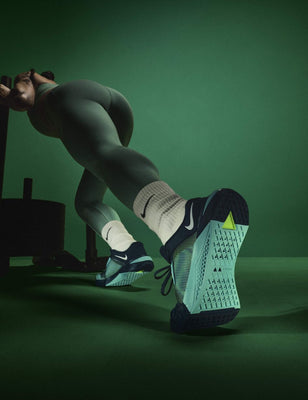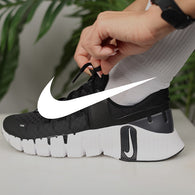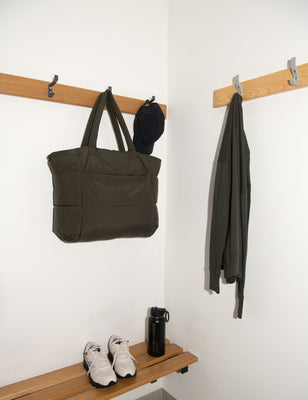Words by Ben Woodcock
Perhaps you’re experiencing pain running along the bottom of your foot, from the centre and/or inner side of the heel bone to your toes. The pain is stabbing, but can be dull and often occurs when you first begin to walk in the morning. Maybe it causes a problem after long periods of standing or when you try to stand after being sat down for a while. Is any of this sounding familiar?

If this is what you’re feeling, you might be struggling with plantar fasciitis, the most common cause of heel pain. Anyone can suffer from plantar fasciitis, whether you’re someone who regularly exercises or not, particularly if this exercise is running. Teachers and office workers may also suffer, but nobody is automatically immune.
Sometimes, the pain can come and go without you doing anything at all. At other times you may need to put some time into treating the rubber band-like ligament. The main thing to bear in mind is, you’re not alone. Two million people receive treatment for plantar fasciitis each year.
The Causes of Plantar Fasciitis
The root cause is damage to the strong band of tissue running along the bottom of the foot. This tissue is caused by plantar fascia, hence the name of the condition itself.
The role of the plantar fascia is to support the arch of the foot. It also spreads the weight of your body evenly across the whole base of the foot, absorbing shock and allowing you to walk, run or stand without difficulty.

An overload in stress on the fascia can result in small tears occurring within the band of tissue. Often, the cause remains unclear and unfortunately further stretching of the fascia, which you would be forgiven for trying as a means of treatment, may only further inflame the tissue resulting in more pain.
While there are no singular, or specific causes there are some common risk factors which might increase the likelihood of you developing such problems.
High Arches
One being your unique foot mechanics such as high-arched or flat feet as this will mean you will distribute your weight unequally across the foot when standing, thus causing added stress onto the fascia. Wearing certain types of shoes, such as high heels, can also place tension onto the band of tissue. So choose your footwear carefully!
Being on Your Feet for Extended Periods
Certain lines of work which have you are on your feet for the best part of the day, may also leave your feet exposed. Factory workers and teachers are two professions more vulnerable, due to the fact they spend their working life on their feet and more often than not, on hard surfaces.
Age
Those aged between 40 and 60 are more prone to plantar fasciitis, simply because the 'older' your fascia is, the more likely it is to produce tears. However, people of any age may find they suffer from plantar fasciitis.
Being Overweight
Obesity is another common ‘cause’. Just like your footwear and profession, being overweight places extra strain on your feet and your fascia, working as the shock absorber of your weight, is what takes the hit. In fact, around 70% of those who suffer from plantar fasciitis are also overweight.
Overuse
Overuse through exercise is an all too common way for someone who is otherwise fit, healthy, and active to injure themselves. Repeated overexertion puts stress on the heel and the tissue attached to it.
Runners, footballers, long jumpers and high jumpers are among athletes likely to develop pain emanating from the fascia.

The Symptoms of Plantar Fasciitis?
The obvious symptom of plantar fasciitis is pain in and around the heel. The heel may also be swollen, although this may not occur during some instances of plantar fasciitis. For those whose plantar fasciitis is exercise induced, the pain often increases after a period of exercise, rather than during it.
The same stabbing, or dull pain is usually worse in the morning, or when you try and stand after sitting for prolonged periods, this is when the fascia is stiff.
Although, pain and stiffness which continues through the day, and even worsens, is also a symptom of plantar fasciitis. A more serious symptom of plantar fasciitis is if you start to experience any tingling or loss of sensation in the foot.
How can Plantar Fasciitis be treated?
There are a series of methods you can use yourself before seeing a physio or GP. Here are a few tips:
• Keep your foot raised when possible: This will reduce swelling in the area which will help the tissue repair and recover.
• Hot and cold treatment: Placing an ice pack on your foot for five minutes before swapping it for a hot water bottle for five minutes will promote blood flow to the area to help its recovery.
• Wear appropriate shoes for the activity/time spent on your feet: If you know you’re going to spend a long time on your feet wear footwear which allow you to do so comfortably.
This means avoiding high heels and sliders for example. Shoes with cushioned heels and substantial arch support are the best shoes for plantar fasciitis.
And of course, this rule extends to running shoes. Be deliberate in your choice of running trainers. The famously cushioned and supportive trainers from HOKA One One are worth a look, especially if you have high arches.

• Swap a run for a swim or bike ride: If you’re desperate to remain active while trying to avoid aggravating the injury, an activity like swimming, which places no burden on the foot would be perfect.
If you don’t have access to a pool, then a bike ride may suffice as less strain is placed on the foot while on two wheels.
In general, cross-training is a great way to approach well-rounded physical health. And including a stretching routine after exercise will further help prevent injury.
• Avoid walking/standing for long periods: Without trying to state the obvious, an essential treatment would be to limit the time you spend on your feet/foot that is causing you pain.
If home remedies have proved ineffective then a trip to the doctors/physiotherapists is the best option. They may use shockwave therapy to stimulate the recovery process of the tissue.
Alternatively, they may administer medication to help reduce inflammation. A doctor or therapist would also point you in the right direction to find the right supports to buy and strapping to use while asleep to help the tissue repair.
The Takeaway
If you think you’re suffering from plantar fasciitis, you aren’t alone. The main thing is, don’t ignore it in the hope that it will disappear at its own accord. While it may do this, it could take months. In the meantime, you will change your gait to accommodate the pain.
This can lead to further problems in the joints in the lower limbs. Try some home treatment first, but if this doesn’t do the trick don’t hesitate in contacting your GP for further help.































































